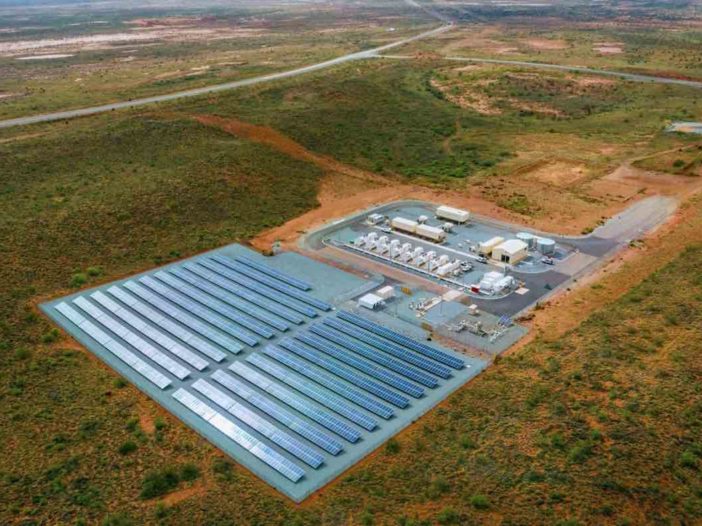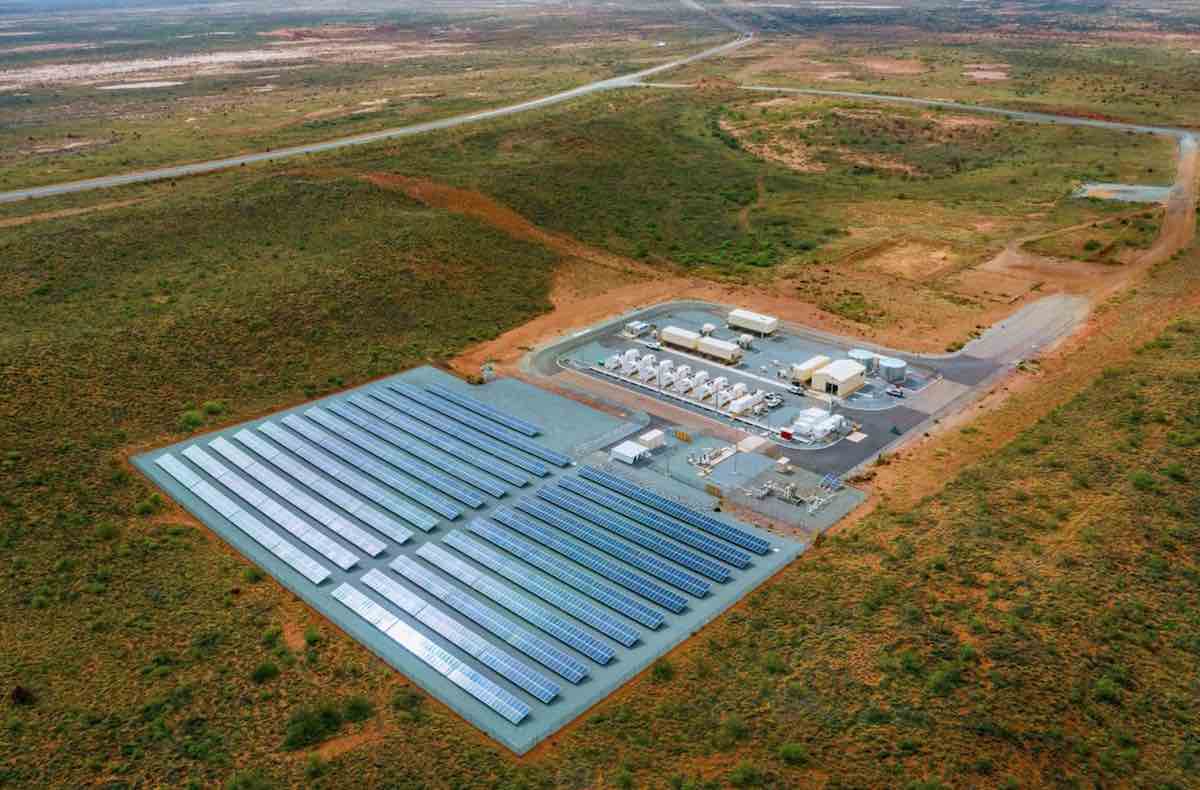
Western Australia has again demonstrated its remote renewable energy generation chops, after successfully powering the Pilbara town of Onslow entirely on a combination of large and small-scale solar and battery storage for a total of 80 minutes.
The milestone achievement was announced by WA energy minister Bill Johnston on Friday morning after being demonstrated by state government-owned regional utility Horizon Power, which established the solar and storage microgrid next to an existing gas plant.
The bid to achieve 100 per cent renewables for the town, announced by Horizon in May, marks the utility’s second attempt at making Onslow – already powered by up to 90% renewables during the day – Australia’s largest town to run on solar and batteries alone.
The renewable microgrid is made up of 700kW of customer generated solar, a 600kW solar array, and a 1MW (no MWh stated) Battery Energy Storage System. It was built by Horizon alongside a relatively new gas-fired modular power station that was designed to be able contract in size as the renewable energy contribution increased.
Horizon built the gas plant in Onslow – the launching base for the massive Wheatstone LNG project owned by Chevron – and commissioned it in 2018, and then in 2019 delivered the solar farm and battery, with some funding help from Chevron.
At the same time, Onslow residents were incentivised to install solar and battery at their homes as part of the project, which ultimately aims to test the management of renewable energy in an isolated regional community.
The microgrid also features and intelligent Distributed Energy Resources Management System (DERMS) commissioned by Horizon in partnership with US-based PXiSE Energy Solutions to act as the brains of the power system.
The state government said on Friday that the DERMS – deployed for the first time in a remote microgrid in Australia – had been “integral to the success of the trial,” using predictive analytics to maximise the amount of renewable energy in the microgrid while maintaining grid stability.
Horizon Power and PXiSE Energy Solutions are expected to continue further DERMS testing ahead of commissioning the project later this year.
“The operation of the Onslow microgrid powered by 100 per cent renewables signifies a landmark step towards building a cleaner, brighter, renewable energy future for our state,” said minister Johnston on Friday.
“This innovative project demonstrates how distributed energy resources can be safely integrated at the grid level, unlocking further benefits from Western Australia’s world-leading rooftop solar uptake.”
Horizon has been at the forefront of remote renewable microgrid development in Australia, largely out of necessity considering the vast and sparse grid it oversees.
As its website notes, Horizon services the biggest area with the least amount of customers in the world – a 2.3 million square kilometre expanse that takes in the Pilbara, Kimberley, Gascoyne, Mid West and the southern region, inlcuding the Southern Goldfields, Esperance, Hopetoun and Norseman.
In May, the utility announced it had broken ground on what would become Australia’s first community microgrid to incorporate renewable hydrogen, a $9.3 million project in the town of Denham that aims to demonstrate a sustainable alternative to diesel to power remote towns.
On Thursday this week Horizon revealed on Facebook that it had “hit another exciting milestone” on the Denham Hydrogen Demonstration Plant project, knocking in the first of 570 piles at the solar farm site.
“Our 1,344kW array (consisting of a massive 3,024 panels) will be mounted on these poles over the coming weeks in preparation for powering our hydrogen demonstration plant and contributing to Denham’s microgrid later in the year,” the utility said.

Sophie is editor of One Step Off The Grid and deputy editor of its sister site, Renew Economy. Sophie has been writing about clean energy for more than a decade.



